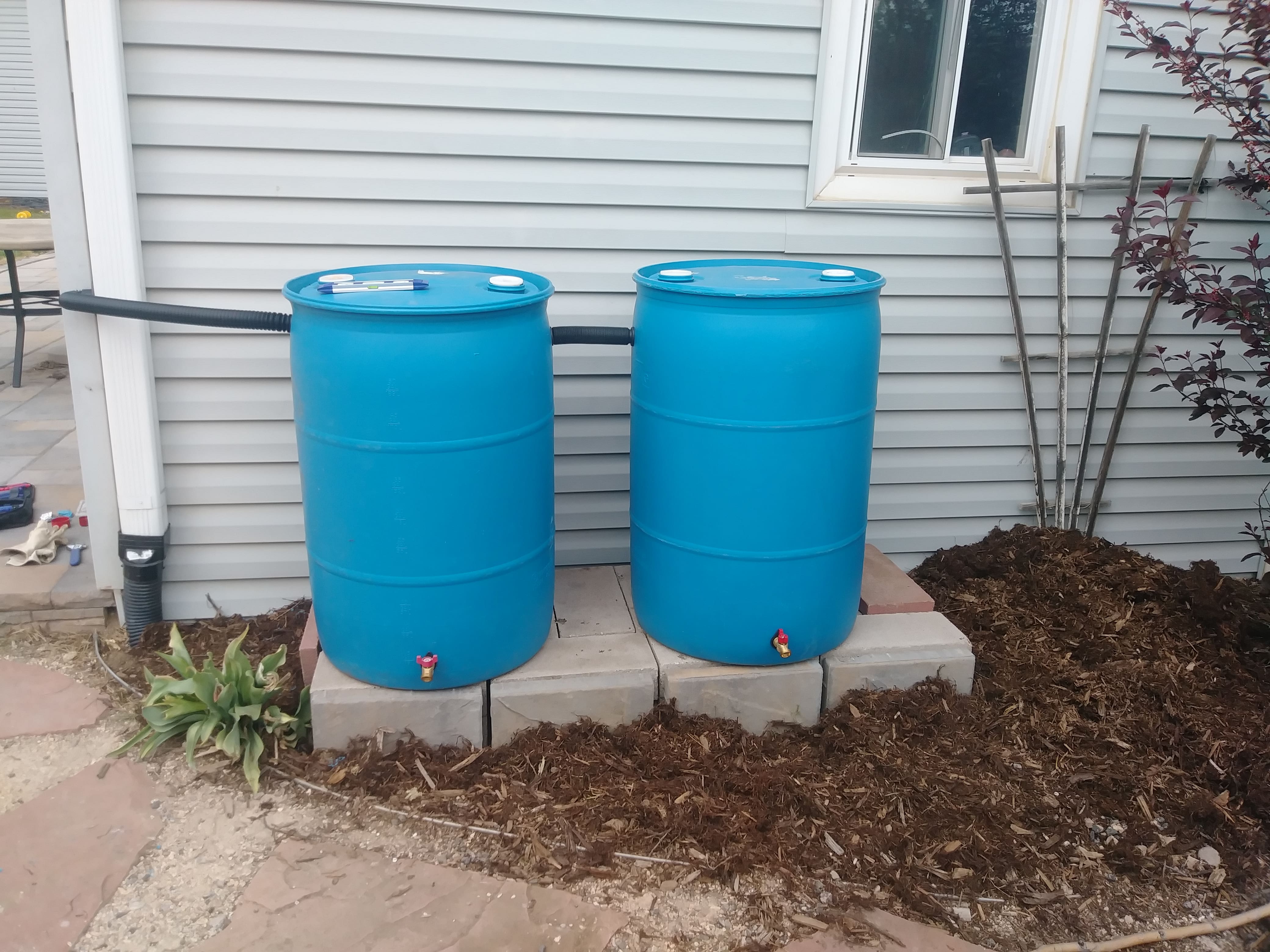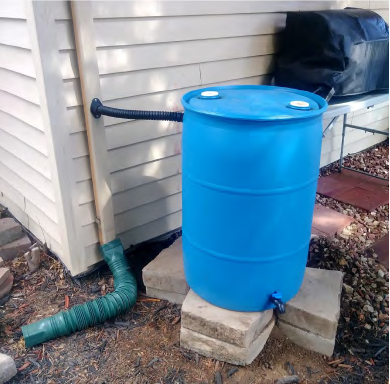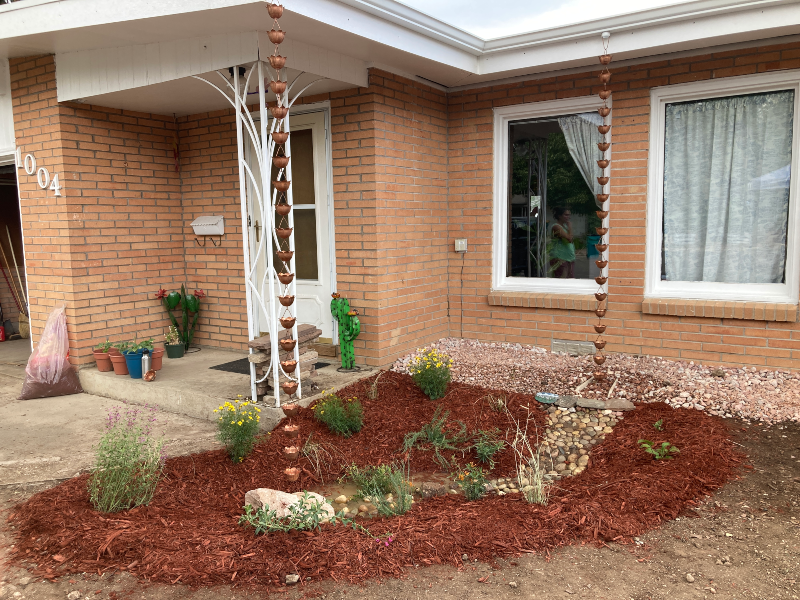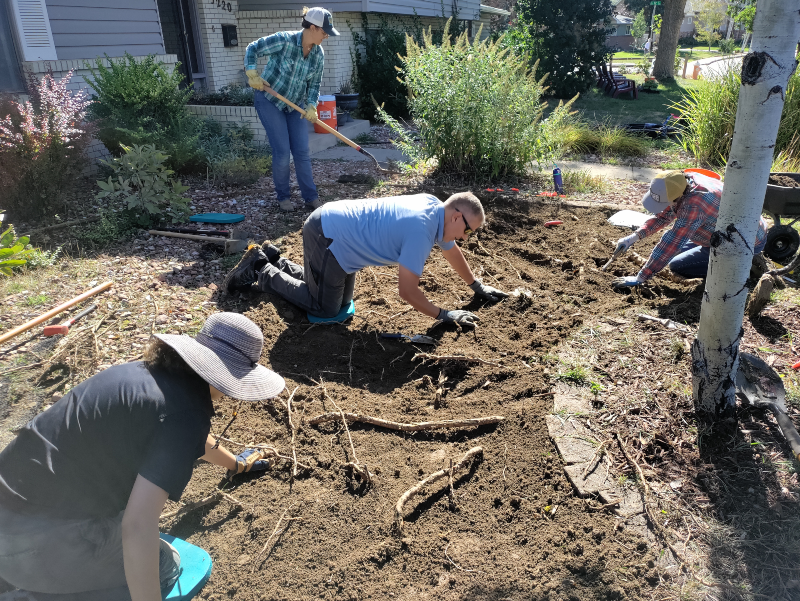Rainwater Harvesting
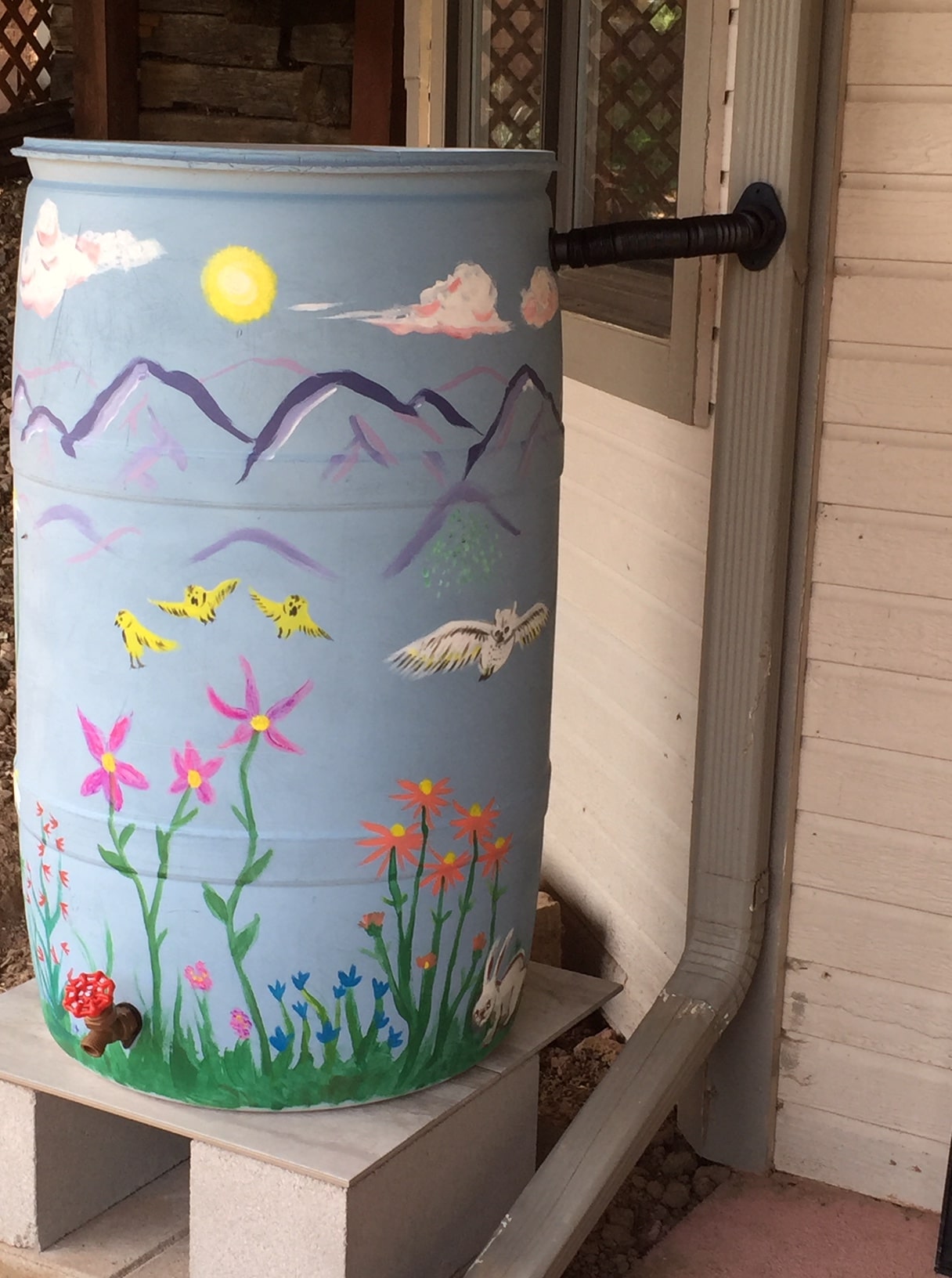
Rainwater collection, also called rainwater “harvesting,” is the process of capturing, storing and directing rainwater runoff and putting it to use. The process involves the collection of rainfall runoff from rooftops, concrete patios, driveways and other paved (impervious) surfaces. This harvested rainwater, also known as roof runoff, can be used to irrigate lawns, landscaping, and garden beds to decrease demand on local drinking water supplies.
Residential and urban areas are designed to transport water away from structures as quickly as possible. This design and the increasing presence of impermeable surfaces (i.e., concrete) drastically reduces infiltration into the soil and increases water runoff, also called stormwater.
Excess runoff causes flooding, damage to infrastructure, and carries pollutants from the streets to our rivers, lakes and streams. However, treating stormwater as a resource rather than a nuisance by harvesting or collecting the water helps communities combat pressures from drought, growing population, and climate change.
Rain Gardens
Rain gardens help prevent flooding while conserving and cleaning water that will eventually find its way back into rivers. They are shallow depressions that collect rainfall from gutter downspouts, allowing the runoff to naturally seep into the ground or be directed onto landscaped areas. In our state, rain gardens should be planted with native plants that are adapted to Colorado’s arid climate while also creating habitat for butterflies, bees and birds.
Colorado’s Turf Replacement Program, which became law in June 2022, incentivizes residents to replace non-native grass with low-water landscaping, including rain gardens. Installing a rain garden is something most people can do with minimal training.
A recent project led by the Colorado Stormwater Center has made training, planting guides and examples of water-wise landscaping available to homeowners for free!
Rain Barrels
Collecting rainwater runoff into a rain barrel helps prevent contaminants from flowing into the local watershed while providing a free, non-potable water source for use in your home landscape. House Bill 16-1005 allows Colorado residents to collect up to 110 gallons of rainwater at a time if:
- Rainwater is collected from the downspouts of the roof
- The rain barrel(s) has a sealable lid and must be located above ground
- Each single-family home or multifamily unit of 4 or fewer units is limited to 2 rain barrels with a total storage capacity of 110 gallons.
- Collected rainwater can only be used for outdoor purposes on the property it is collected on.
Collecting rainwater helps reduce polluted runoff from entering urban waterways, reduces erosion on your property, and provides moisture control around your home’s foundation. The water collected and used for outdoor irrigation reduces reliance on potable, municipal water- saving you money on your water bill. According to Denver Water, outdoor irrigation is responsible for 50% of your home’s total water use, rain barrels help to reduce your water bill and your potable (drinking) water consumption for the landscape.
